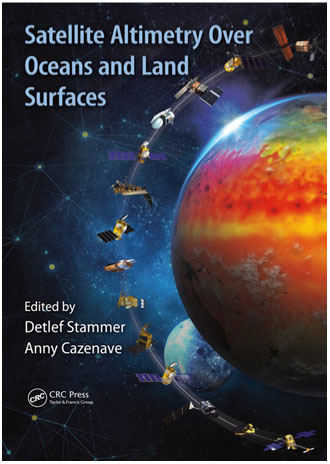
Satellite-based altimetry is the science of measuring range to the Earth’s surface very accurately and thus inferring the surface elevation at the nadir point. From early experiments on Skylab in the early 1970s the discipline has matured such that now sea surface height can be measured to a few centimetres from over 1,000 km up. This book’s opening chapter is festooned with interesting historical details on the technological developments spanning the succeeding 40 years.
For many years, Satellite Altimetry and Earth Sciences: A Handbook of Techniques and Applications (Academic Press. 2001) by L.-L. Fu and A. Cazenave has been the go-to reference manual for details on altimetry design and operation. This new compendium of articles brought together by Stammer and Cazenave is a worthy successor to Satellite Altimetry and Earth Sciences. Satellite Altimetry over Oceans and Land Surfaces is suitable for both students of Earth observation and for experienced researchers, as it brings the technical material up to date with extra sections on delay-Doppler (‘SAR’) altimetry, operations at Ka-band and the potential for future wide-swath altimeters. These early sections on the detail of altimeter operation are complemented by chapters on gravimetry and hydrography from Argo floats that are key to disentangling the changes in sea level due to thermal expansion and to mass gain (principally melting of ice sheets and glaciers).
The central section of the book then summarises oceanographic applications, focussing in turn on the physics of low, mid and high latitude circulation systems and covering the wave height and wind speed information available from nearly three decades of altimetry. There is a detailed section on the quantification of tidal signals, and the estimation of bathymetric features is also covered in depth. It was particularly gratifying to see that this volume has a greatly expanded coverage of altimetry over non-marine surfaces, ranging from Arctic sea ice to major ice sheets on land and the recording of water levels in lakes and large rivers.
Despite the 18 chapters involving an authorship of nearly 90 people, the book does appear quite coherent, indicating that the editors have kept good oversight of the remit of individual chapters. Some of the early ones do contain glossaries of the acronyms used, and it would have been nice if this had been repeated in all chapters, since this is a book that one would like to dip into at times rather than read whole chapters in their entirety.


